The story of the lighter-than-air craft at sea is not one of success. Early attempts were not particularly successful, with the RN being a particular loser when their first rigid airship broke in half before its first flight. The Germans did somewhat better, with Zeppelins being used extensively on patrol missions in the North Sea and the Baltic. But bad weather and poor doctrine meant that they were generally not particularly effective, and the Naval Airship Division began to look for other missions.

The most obvious of these was using the Zeppelins as bombers, attacking far behind the lines. The Army had used its airships in a number of raids on targets in continental Europe, with little success and fairly heavy losses. But the Navy believed that bombing London could, in conjunction with unrestricted submarine warfare, destroy British morale and bring the country to its knees. Eventually, the Kaiser consented to the raids, provided they avoided threatening the Royal Family and instead focused on military targets. Nobody seems to have realized that the inaccuracy of bombing made this completely impossible. The first raid was carried out on January 19th, 1915, and attacked several towns in Norfolk, killing four. More raids followed throughout the year, and the Royal Navy, as traditional guardians of the British isles, was given responsibility for defending against them, although the Royal Flying Corps got into the game later on for overland interceptions.
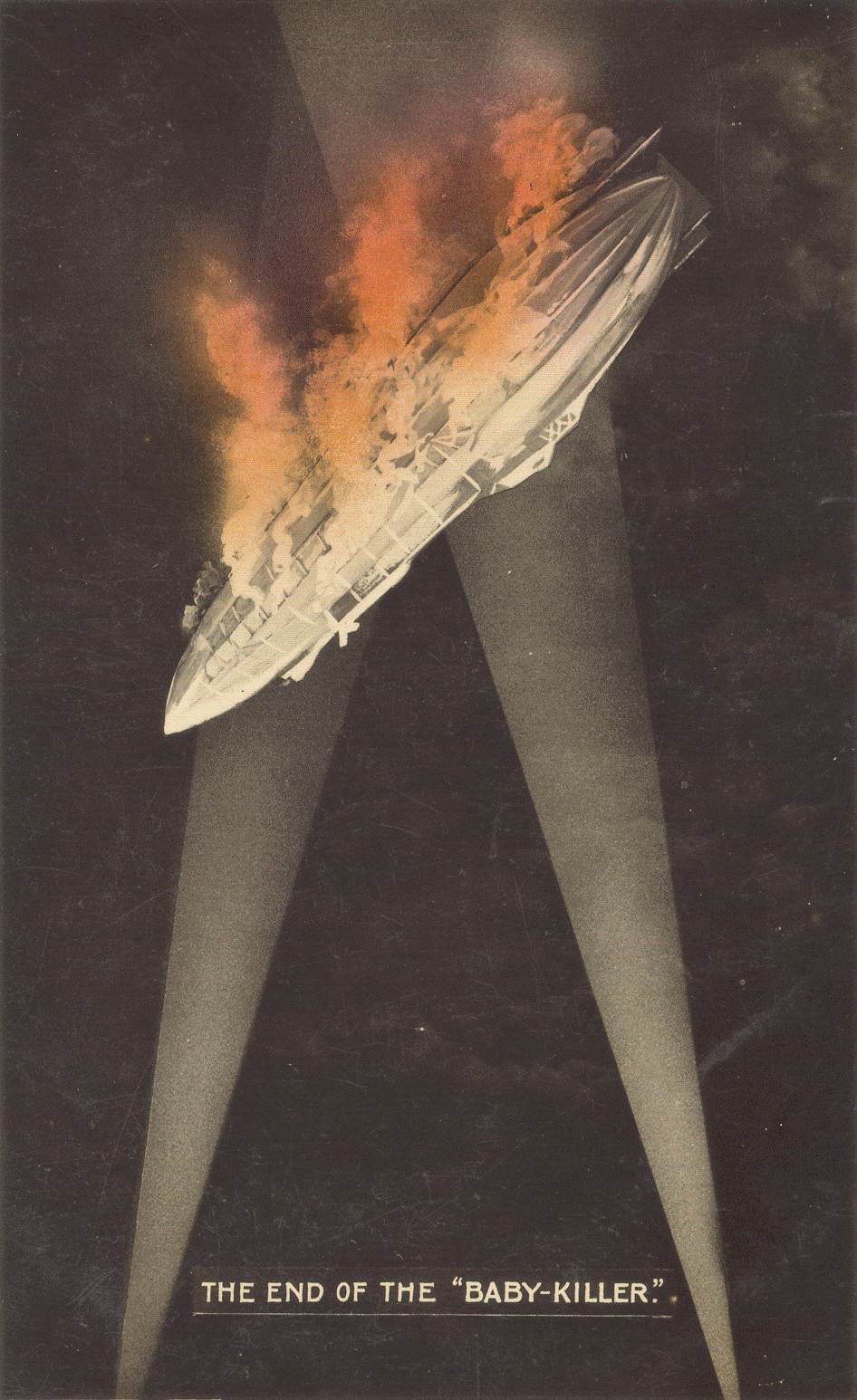
Shooting down zeppelins turned out to be much harder might be expected, given that they were literally giant bags of extremely flammable gas. Antiaircraft fire control was still primitive, limiting the effectiveness of AA guns against targets at high altitude.1 Fighters also struggled early in the war. Zeppelins were often able to fly above the ceilings of the fighters, or at least high enough that the fighters couldn't take off and get to altitude before the airship had dropped its bombs and gone.2 Even when they got within range, fighters still had problems killing their targets. Rifle-caliber machine guns easily punched holes in the skin of the Zeppelin, but the pressure difference wasn't enough to let a lot of gas out, which made actually igniting a fire difficult. A number of weapons were tried, including such oddities as incendiary air-to-air bombs, but a mix of explosive and incendiary bullets was eventually found to be the best solution. Zeppelins tried to go even higher, often hiding in the clouds with a small car dangled 3,000' below to spot targets, but it was ultimately a losing battle.

A Zeppelin shot down over England
During the course of the war, the Germans launched 51 Zeppelin raids on Britain, with 84 airships taking part and 30 being lost to enemy action or accident. The death toll in Britain was not particularly heavy, with only 557 dead and 1,358 injured, but in the early war, the airship raids caused widespread panic. They dwindled after 1917, with the few remaining raids focusing on the northern reaches of the UK, out of range of the Gotha bombers that continued the campaign against London. A few tactical raids were launched, most notably against Russian defenses during Operation Albion, the German seizure of islands in the Gulf of Riga.
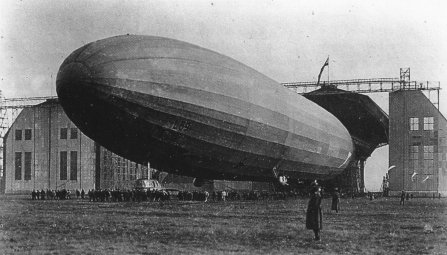
L 59
One last aspect of the German naval airship program that bears discussion is the flight of L 59. In 1914, the British had moved against German forces in their East African colonies (what is now Tanzania). The Germans, under Paul von Lettow-Vorbeck, spent the next four years waging a spectacularly successful guerilla war in the interior of Africa. But in 1917, supplies were getting low, and the decision was made to send more by Zeppelin. L 59 was chosen for the one-way trip, and departed from Bulgaria on a journey of almost 3,600 miles, although prevailing winds meant that the still-air equivalent distance was actually over 4,300 miles, and the trip would take 108 hours. Due to the impossibility of resupplying hydrogen, which slowly leaked through the gasbags of the airship, it would be a one-way trip, with the Zeppelin being broken down and its materials used to bolster the 15 tons of supplies it carried.
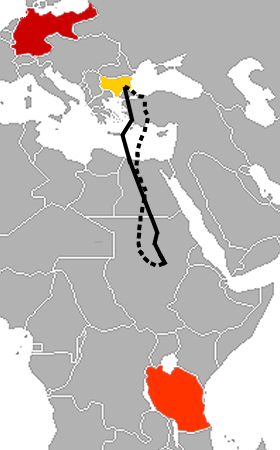
L 59's mission
It was not a smooth mission. Weather, the perennial bugbear of the airship, cancelled the first two attempts, and interfered with the third, launched on November 21st. An engine failure and a near-crash due to air currents over the desert were overcome, but on the 23rd, while west of Khartoum, the crew of L 59 received the abort signal, and reluctantly turned for home. The proposed landing area had been captured by the British, and von Lettow-Vorbeck had been forced to retreat into the mountains, where landing the airship was impossible. After 95 hours and 4,200 miles, L 59 returned home. It remains the longest nonstop military airship flight in history.3
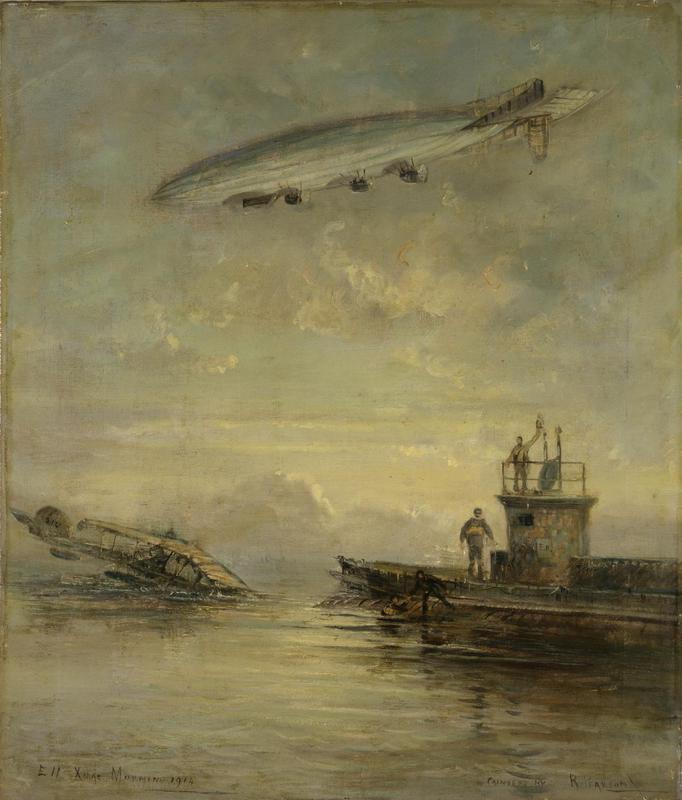
A seaplane's crew is recovered after the Cuxhaven Raid
The British, of course, were well aware of the problems that zeppelin reconnaissance posed, and quickly devised countermeasures. Their first plan was to bomb the Zeppelins in their sheds at Cuxhaven on Christmas Day, 1914, using seaplanes launched from offshore. Unfortunately, heavy fog kept the first carrier strike in history from finding its target. Several more attempts were made during the course of the war, but none were successful until July 1918, when aircraft launched directly from Furious struck the sheds at Tondern, destroying two Zeppelins. But this wasn't enough, and besides the AA guns fitted to the ships of the fleet, seaplane carriers began to accompany it, loaded with fighters. Unfortunately, they proved unsuccessful in the role, the drag of their floats and the ability of airships to climb quickly by dropping ballast frustrating all attempts at interception.
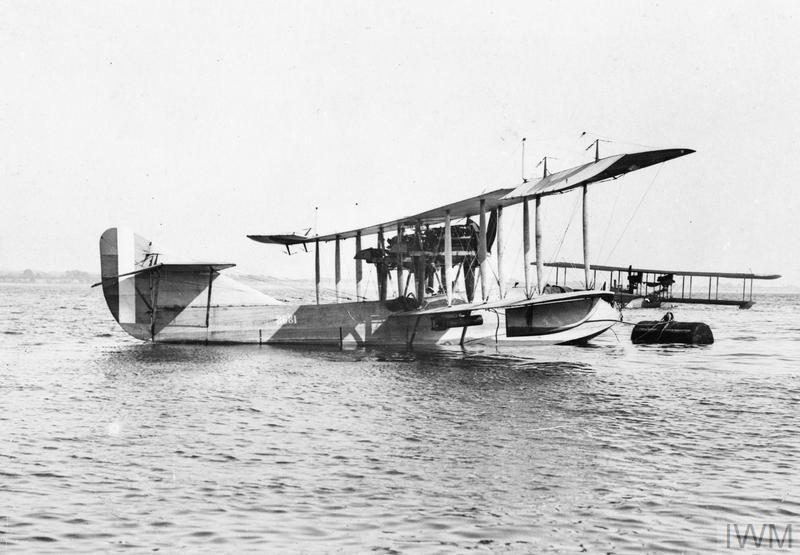
A Large America flying boat
The first successful operation against the Zeppelins was actually made by Curtiss "Large America" flying boats, operating from land bases. These had the range to reach the Zeppelin patrol areas from Britain, and were cued by British radio direction-finding, due to the Zeppelin's practice of announcing their arrival on station. They first found L22, which was shot down without giving any warning to the Germans. The next few attempts were unsuccessful, but they did eventually down L 43, and the Germans began to patrol at much higher altitudes, which made it impossible to search for mines or submarines, and much harder to identify warships.
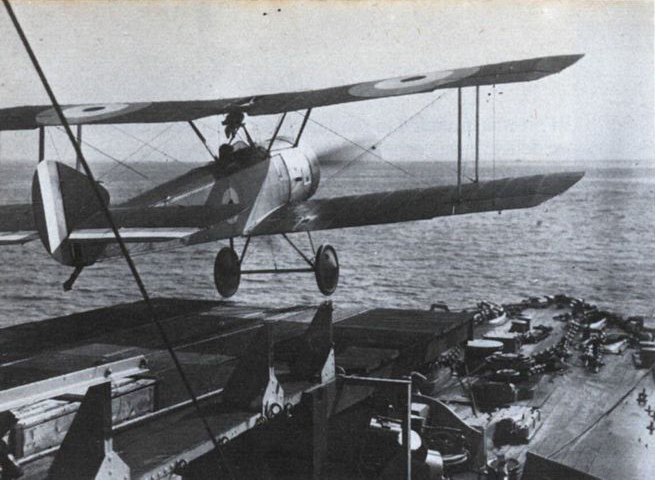
A fighter takes off from cruiser Yarmouth
To get greater performance, the British turned to landplanes, launched from platforms fitted to light cruisers and atop the turrets of their battleships. These had the performance to be a serious threat to the Zeppelins, but were obviously unable to return to their launching ship. However, at this point aircraft were cheap enough that they would simply be ditched if too far from shore, with the pilot being rescued, and the plane usually fished out so the engine could be reused. The first success came in August 1917, when a Sopwith Pup flying from a fixed platform on cruiser Yarmouth shot down Zeppelin L23. To bolster the shipboard fighters, the British began developing lighters, unpowered boats towed by destroyers and capable of carrying a Sopwith Camel each. These scored only a single success in mid-1918, by which point Germany, and the Zeppelin force, was on its last legs.
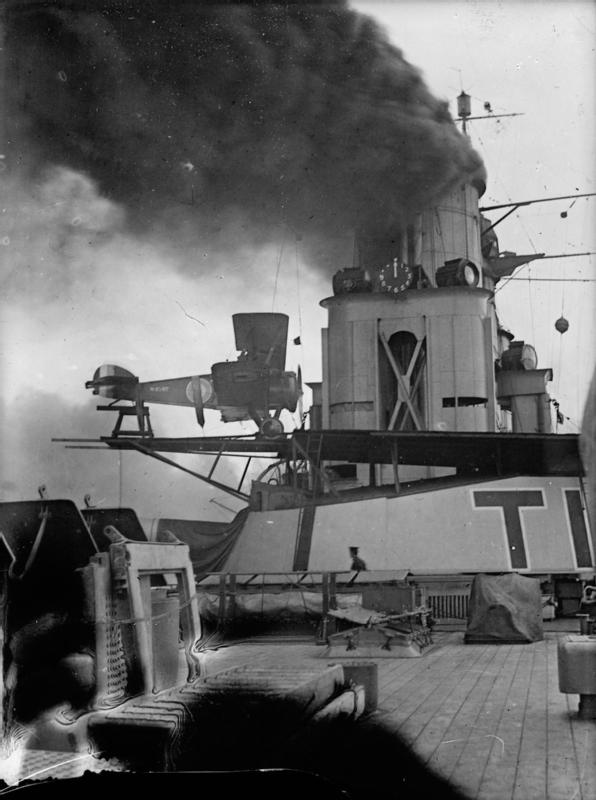
A Sopwith Camel on a flying-off platform aboard HMS Tiger
But while the Germans Zeppelins may have been the most prominent of the naval airships, they were far from the only ones, and the British also made extensive use of lighter-than-air craft in support of naval operations. We'll pick up the story there next time.
1 They were often more useful in keeping Zeppelins on marine patrol at a distance, although at least one Zeppelin, L7, was shot down by British AA fire. ⇑
2 This problem was compounded by the ability of the Zeppelins to outclimb the fighters of the day by dropping their ballast. To solve this, the British proposed replacing the car on a non-rigid airship with a fighter, which would be carried above the Zeppelin, then separate and shoot it down. The first trial resulted in the fighter crashing and killing two officers and the project was suspended. ⇑
3 The whole plan seems reminiscent of the Black Buck Raid. It's a magnificent technical accomplishment, but also rather silly. ⇑

Comments
Thanks for writing this!
Two typos you may want to fix: "... during teh courlse of..."
Oops. Fixed now.
...I had no idea the Germans built 80 zeppelins, much less lost darn near half.
Also, cool story - got to go inside the Goodyear Airdock one memorable day. That's something you don't ever forget.
L59 just emphasises that there are hundreds of fantastic stories out there that would make much, much better movies than so much of the fictional garbage that is actually produced.
Not that I'm saying that fiction is worse than fact, but that great fact is much better than rubbish fiction or mindless reboots.
On that subject, people are floating the idea of a remake of Princess Bride. I suspect it will replicate the lighter than air craft made from thick lead sheeting, much the same as new Ghost Busters did.
"Doctorpat said... L59 just emphasises that there are hundreds of fantastic stories out there that would make much, much better movies than so much of the fictional garbage that is actually produced."
...Second THAT. WWI has some amazing tales, and WWII brought us things like the Doolittle Raid, and the PanAm Clipper that was caught behind Japanese forces after Pearl Harbor...and then had to fly around the world to get home to New York.
I would put the Doolittle Raid in the pile of "massively overdone", at least relative to other similarly interesting things. (Some of this is too many visits to air museums with B-25s that talked about nothing else.) But I'm also not Team Air Force. A movie about the Pan Am clipper would be interesting, though.
Surprised you didn't mention that the Cuxhaven raid, first carrier air strike in history, was preceded by one of the first strategic air raids in history on the Zeppelin factory in Friedrichshafen - attempting to deal with the problem at source.
I decided that was out of scope, as I was trying to keep a focus on the naval airship program.
It was a navy (RNAS) operation ;-)
I’m aware of that. The RNAS did a bunch of stuff (it was in practical terms the equal of the RFC) and I chose “direct operations against naval airships at sea” as my border for what I was talking about here.
Admittedly this justification was somewhat undercut by the inclusion of the bombing campaign and L59. The way these get built is somewhat arbitrary, and if I was to go back in time and write it again, the results would likely be somewhat different.